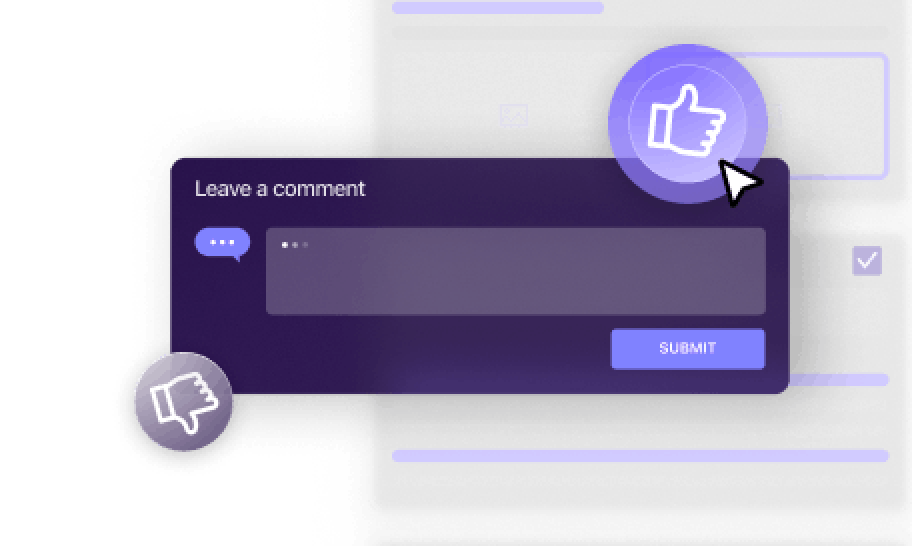Contents
Overview of Llama 3.1
Overview of Previous Llama Models
Importance of Openness in AI
Technical Highlights of Llama 3.1
Real-World Applications of Llama 3.1
Building with Llama 3.1
Key Highlights of Llama 3.1
Encord Blog
Meta’s Llama 3.1 Explained
5 min read

Meta has released Llama 3.1, an open-source AI model that rivals the best closed-source models like OpenAI’s GPT-4o, Anthropic’s Claude 3, and Google Gemini in flexibility, control, and capabilities. This release marks a pivotal moment in democratizing AI development, offering advanced features like expanded context length and multilingual support.
All versions of Llama 3.1 8B, 70B, and 405B are powerful models. With its state-of-the-art capabilities, it can unlock new possibilities in synthetic data generation, model distillation, and beyond. In this blog post, we'll explore the technical advancements, practical applications, and broader implications of Llama 3.1.
Overview of Llama 3.1
Llama 3.1 405B is a frontier-level model designed to push the boundaries of what's possible with generative AI. It offers a context length of up to 128K tokens and supports eight languages, making it incredibly versatile. The model's capabilities in general knowledge, math, tool use, and multilingual translation are state-of-the-art, rivaling the best closed-source models available today. Llama 3.1 also introduces significant improvements in synthetic data generation and model distillation, paving the way for more efficient AI development and deployment.
The Llama 3.1 collection also includes upgraded variants of the 8B and 70B models, which boast enhanced reasoning capabilities and support for advanced use cases such as long-form text summarization, multilingual conversational agents, and coding assistants. Meta's focus on openness and innovation ensures that these models are available for download and development on various platforms, providing a robust ecosystem for AI advancement.

Overview of Previous Llama Models
Llama 1
Released in early 2023, Llama 1 was Meta AI’s initial foray into large language models with up to 70 billion parameters. It laid the groundwork for accessible and customizable LLM models, emphasizing transparency and broad usability.
Llama 2
Launched later in 2023, Llama 2 improved upon its predecessor with enhanced capabilities and larger models, reaching up to 70 billion parameters. It introduced better performance in natural language understanding and generation, making it a versatile tool for developers and researchers.
Importance of Openness in AI
Meta’s latest release, Llama 3.1 405B, underscores the company’s unwavering commitment to open-source AI. In a letter, Mark Zuckerberg highlighted the numerous benefits of open-source AI, emphasizing how it democratizes access to advanced technology and ensures that power is not concentrated in the hands of a few.
Advantages of Open-Source Models
Unlike closed models, open-source model weights are fully accessible for download, allowing developers to tailor the model to their specific needs. This flexibility extends to training on new datasets, conducting, additional fine-tuning, and developing models invarious environments - whether in the cloud, on-premise, or even locally on laptop- without the need to share the data with the providers. This level of customization allows developers to fully harness the power of generative AI, making it more versatile and impactful.
While some argue that closed models are more cost-effective, Llama 3.1 models offer some of the lowest cost per token in the industry, according to testing by Artificial Analysis.
Technical Highlights of Llama 3.1
Model Specifications
Meta Llama 3.1 is the most advanced open-source AI model to date. With a staggering 405 billion parameters, it is designed to handle complex tasks with remarkable efficiency. The model leverages a standard decoder-only transformer architecture with minor adaptations to maximize training stability and scalability. Trained on over 15 trillion tokens using 16,000 H100 GPUs, Llama 3.1 405B achieves superior performance and versatility.
Performance and Capabilities
Llama 3.1 405B sets a new benchmark in AI performance. Evaluated on over 150 datasets, it excels in various tasks, including general knowledge, steerability, math, tool use, and multilingual translation. Extensive human evaluations reveal that Llama 3.1 is competitive with leading models like GPT-4, GPT-4o, and Claude 3.5 Sonnet, demonstrating its state-of-the-art capabilities across a range of real-world scenarios.


Multilingual and Extended Context Length
One of the standout features of Llama 3.1 is its support for an expanded context length of up to 128K tokens. This significant increase enables the model to handle long-form content, making it ideal for applications such as comprehensive text summarization and in-depth conversations. Llama 3.1 also supports eight languages, enhancing its utility for multilingual applications and making it a powerful tool for global use.
Model Architecture and Training
Llama 3.1 uses a standard decoder-only transformer model architecture, optimized for large-scale training. The iterative post-training procedure, involving supervised fine-tuning and direct preference optimization, ensures high-quality synthetic data generation and improved performance across capabilities. By enhancing both the quantity and quality of pre- and post-training data, Llama 3.1 achieves superior results, adhering to scaling laws that predict better performance with increased model size.

To support large-scale production inference, Llama 3.1 models are quantized from 16-bit (BF16) to 8-bit (FP8) numerics, reducing compute requirements and enabling efficient deployment within a single server node.
Instruction and Chat Fine-Tuning
Llama 3.1 405B excels in detailed instruction-following and chat interactions, thanks to multiple rounds of alignment on top of the pre-trained model. This involves Supervised Fine-Tuning (SFT), Rejection Sampling (RS), and Direct Preference Optimization (DPO), with synthetic data generation playing a key role. The model undergoes rigorous data processing to filter and balance the fine-tuning data, ensuring high-quality responses across all capabilities, even with the extended 128K context window.
Real-World Applications of Llama 3.1
Llama 3.1’s advanced capabilities make it suitable for a wide range of applications, from real-time and batch inference to supervised fine-tuning and continual pre-training. It supports advanced workflows such as Retrieval-Augmented Generation (RAG) and function calling, offering developers robust tools to create innovative solutions.
Some of the possible applications include:
- Healthcare: Llama 3.1’s multilingual support and extended context length are particularly beneficial in the medical field. AI models built on Llama 3.1 can assist in clinical decision-making by providing detailed analysis and recommendations based on extensive medical literature and patient data. For instance, a healthcare non-profit in Brazil has utilized Llama to streamline patient information management, improving communication and care coordination.
- Education: In education, Llama 3.1 can serve as an intelligent tutor, offering personalized learning experiences to students. Its ability to understand and generate long-form content makes it perfect for creating comprehensive study guides and providing detailed explanations on complex topics. An AI study buddy built with Llama and integrated into platforms like WhatsApp and Messenger showcases how it can support students in their learning journeys.
- Customer Service: The model’s enhanced reasoning capabilities and multilingual support can greatly improve customer service interactions. Llama 3.1 can be deployed as a conversational agent that understands and responds to customer inquiries in multiple languages, providing accurate and contextually appropriate responses, thereby enhancing user satisfaction and efficiency.
- Synthetic Data Generation: One of the standout features of Llama 3.1 is its ability to generate high-quality synthetic data. This can be used to train smaller models, perform simulations, and create datasets for various research purposes.
- Model Distillation: Llama 3.1 supports advanced model distillation techniques, allowing developers to create smaller, more efficient models without sacrificing performance. This capability is particularly useful for deploying AI on devices with limited computational resources, making high-performance AI accessible in more scenarios.
- Multilingual Conversational Agents: With support for eight languages and an extended context window, Llama 3.1 is ideal for building multilingual conversational agents. These chatbots can handle complex interactions, maintain context over long conversations, and provide accurate translations, making them valuable tools for global businesses and communication platforms.
Building with Llama 3.1
Getting Started
For developers looking to implement Llama 3.1 right away, Meta provides a comprehensive ecosystem that supports various development workflows. Whether you are looking to implement real-time inference, perform supervised fine-tuning, or generate synthetic data, Llama 3.1 offers the tools and resources needed to get started quickly.
Accessibility
Llama 3.1 models are available for download on Meta’s platform and Hugging Face, ensuring easy access for developers. Additionally, the models can be run in any environment—cloud, on-premises, or local—without the need to share data with Meta, providing full control over data privacy and security.
Partner Ecosystem
Meta’s robust partner ecosystem includes AWS, NVIDIA, Databricks, Groq, Dell, Azure, Google Cloud, and Snowflake. These partners offer services and optimizations that help developers leverage the full potential of Llama 3.1, from low-latency inference to turnkey solutions for model distillation and Retrieval-Augmented Generation (RAG).

Advanced Workflows and Tools
Meta’s Llama ecosystem is designed to support advanced AI development workflows, making it easier for developers to create and deploy applications.
- Synthetic Data Generation: With built-in support for easy-to-use synthetic data generation, developers can quickly produce high-quality data for training and fine-tuning smaller models. This capability accelerates the development process and enhances model performance.
- Model Distillation: Meta provides clear guidelines and tools for model distillation, enabling developers to create smaller, efficient models from the 405B parameter model. This process helps optimize performance while reducing computational requirements.
- Retrieval-Augmented Generation (RAG): Llama 3.1 supports RAG workflows, allowing developers to build applications that combine retrieval-based approaches with generative models. This results in more accurate and contextually relevant outputs, enhancing the overall user experience.
- Function Calling and Real-Time Inference: The model’s capabilities extend to real-time and batch inference, supporting various use cases from interactive applications to large-scale data processing tasks. This flexibility ensures that developers can build applications that meet their specific needs.
Community and Support
Developers can access resources, tutorials, and community forums to share knowledge and best practices.
- Community Projects: Meta collaborates with key community projects like vLLM, TensorRT, and PyTorch to ensure that Llama 3.1 is optimized for production deployment. These collaborations help developers get the most out of the model, regardless of their deployment environment.
- Safety and Security: To promote responsible AI use, Meta has introduced new security and safety tools, including Llama Guard 3 and Prompt Guard. These tools help developers build applications that adhere to best practices in AI safety and ethical considerations.
Key Highlights of Llama 3.1
- Massive Scale and Advanced Performance: The 405B version boasts 405 billion parameters and was trained on over 15 trillion tokens, delivering top-tier performance across various tasks.
- Extended Context and Multilingual Capabilities: Supports up to 128K tokens for comprehensive content generation and handles eight languages, enhancing global application versatility.
- Innovative Features: Enables synthetic data generation and model distillation, allowing for the creation of efficient models and robust training datasets.
- Comprehensive Ecosystem Support: Available for download on Meta’s platform and Hugging Face, with deployment options across cloud, on-premises, and local environments, supported by key industry partners.
- Enhanced Safety and Community Collaboration: Includes new safety tools like Llama Guard 3 and Prompt Guard, with active support from community projects for optimized development and deployment.
Explore the platform
Data infrastructure for multimodal AI
Explore product
Explore our products
- Llama 3.1 405B is Meta’s latest open-source artificial intelligence model with 405 billion parameters, offering advanced capabilities in context length, multilingual support, and performance.
- It supports up to 128K tokens, allowing for detailed and long-form content generation.
- The model is available for download on Meta’s platform and Hugging Face. It can be deployed in cloud, on-premises, or local environments.
- New features include synthetic data generation, model distillation, and enhanced instruction-following capabilities.
- Llama 3.1 comes with Llama Guard 3 and Prompt Guard to ensure responsible AI use and safety.


